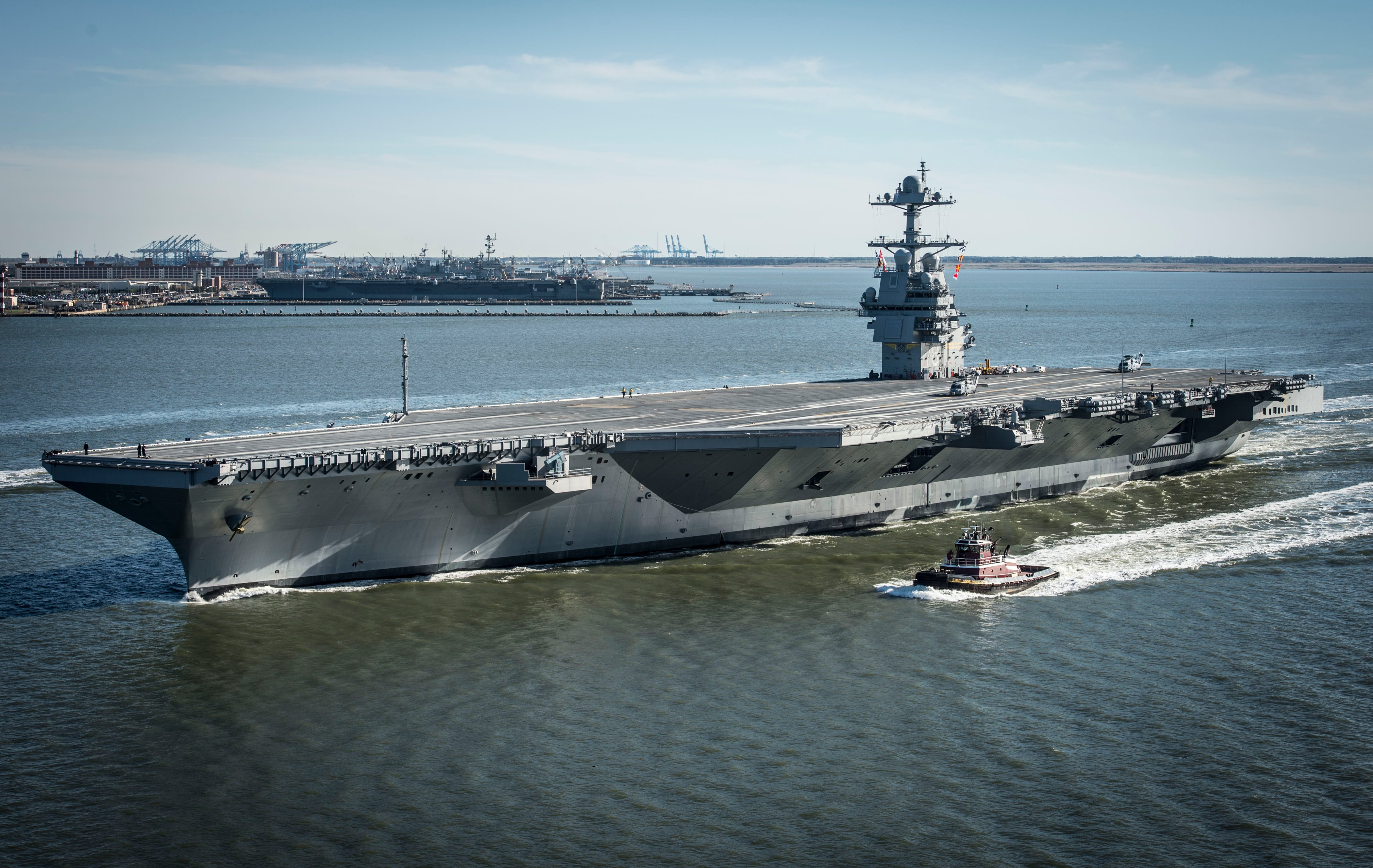NORFOLK, Va. — In the pilot house of the Navy's newest aircraft carrier, Petty Officer 1st Class Jose Triana doesn't just go by the book. He helped write the book.
"We're creating guidelines," he said Monday. "Were creating operational — basically instructions — on how to operate this ship with its systems and its new design."
The story is the same throughout the Gerald R. Ford, the $12.9 billion warship that will be commissioned at Naval Station Norfolk on July 22. The Navy allowed journalists on the first-in-class ship Monday for a sneak peek ahead of the big day.
On a ship packed with new technology, sailors are more than crew members. By necessity, they have become expert authorities, accumulating months or years of hands-on experience with systems that haven't been tested in combat.
It hasn't been easy. Critical components like the electromagnetic catapults and the advanced arresting gear — responsible for allowing planes to safely take off and land — have had much-publicized growing pains. Beset by cost overruns and schedule delays, the Ford has taken shots from some key members of Congress.
More work remains before the new systems are declared battle-ready. The Ford is expected to be operational in 2020, according to Naval Sea Systems Command.
Growing pains aside, the Trump administration wants to boost the number of carriers from 11 to 12, part of a broader expansion of the naval fleet that has support in Congress. Navy leaders said the Ford-class ships will usher in a new era of naval sea power, with more advanced systems than the current Nimitz-class carriers.
Its flight deck is reconfigured to allow for more efficient movement of aircraft. Below decks, living quarters are designed with more comfort in mind, with handy USB ports to charge portable phones and other devices. Sailors no longer have to walk down a hall to hit the showers. The bathroom sinks are carbon fiber, and there are no urinals, which saves money and makes it easier to move male and female sailors to different areas.
From the pilot house, which includes a padded captain's chair, Triana will navigate with a one-of-a-kind control system connected by fiber-optic cable. It uses touch-screen controls instead of throttles to call upon the ship's nuclear power.
Capt. Brent Gaut, the ship's executive officer, came aboard several weeks ago and said he is impressed by the crew's knowledge.
"We have, no doubt, without question, subject-matter experts on these new systems," he said. "They've been training on them for upwards of two, three years now. There's no one else in the fleet that has some of the systems we have. They are the go-to personnel on how to operate and how to execute with the new systems that we have."

The future supercarrier Gerald R. Ford gets underway under its own power for the first time in April. A debate is swirling about whether the Navy should keep building such ships.
Photo Credit: PO2 Ridge Leoni/Navy
Some sailors have seen that expertise grow day by day as the Ford took shape at Newport News Shipbuilding over the course of several years.
Chief Petty Officer John Quillen came to the Ford in August 2013, when the ship was still in dry dock. He handles aircraft fueling operations.
"On board Ford, we have about 40 fuel stations, much more than any Nimitz-class carrier. It gives us the capability to fuel from multiple places (and) enables us to do more with less personnel," he said.
But for someone who has toiled long hours in the shipyard, seeing the Ford come to life means more than a just a job.
"This has been the experience of a lifetime," he said. "Being able to start at its inception and then to see if finally get underway — for it to be commissioned after this long of a time — it's really been an honor to be here and work with this crew."
Capt. Richard McCormack, the Ford's commanding officer, said he's confident the new technology will perform well when called upon. After the July 22 commissioning, the ship will head to sea for more training and tests, including having fighter jets take off and land.
"With all new technology there are risks," he said. "But that's why we're here — to go out there and shake them down."
The first round of sea trials resulted in the Navy taking delivery of the ship from the Newport News shipyard. It tested the ship's propulsion and other basic systems. McCormack's job is to get the ship ready for flight operations.
"We take it one step at a time," he said. "We don't try to do too much at once. We find out what we have to repair or replace, and go on to the next step."
Back at the Newport News shipyard, work is already underway on the second and third Ford-class carriers. A few shipbuilders made the trip to Norfolk Monday to get a look at their handiwork.
The visitors included Tom Sweeney, a construction superintendent whose family has served the yard for four generations. It started with his grandfather, then his father. Sweeney is the third generation, and two of his sons work on aircraft carriers.
Shipbuilders will always have a sense of ownership of the Ford, but now it's the Navy's turn, he said.
"You're kind of proud that you're done," he said. "Now it's time for them to take over."





